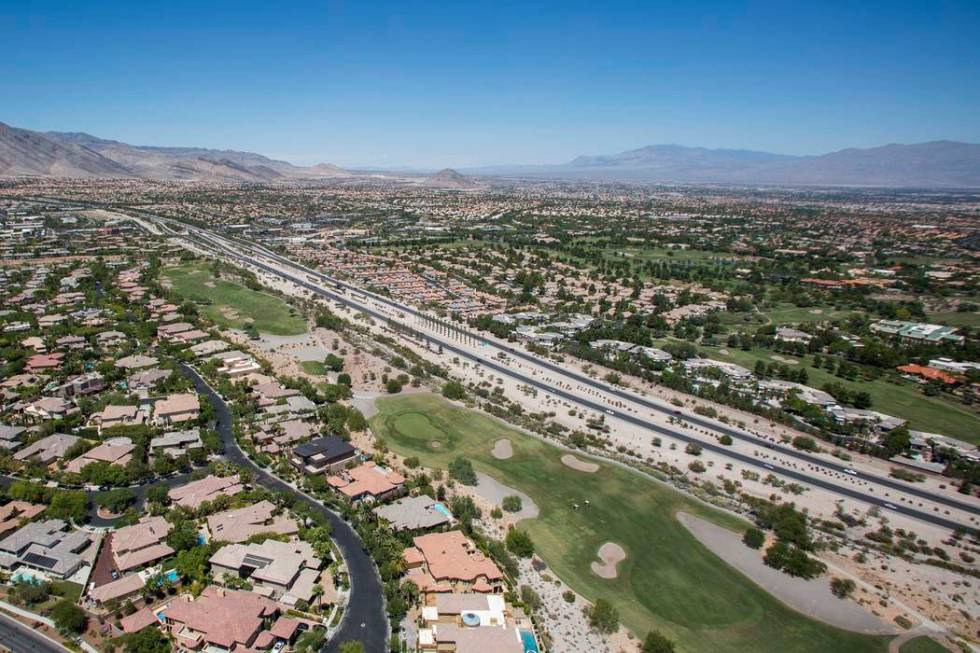Summerlin Parkway was rustic byway not long ago

If you were around these parts in 1989, when the city opened the first mile or so of Summerlin Parkway, you might have described the new artery as a scenic country road.
Not many of us could have envisioned that a full-grown, 5.3-mile Summerlin Parkway, which has since connected Route 95 to the 215 Beltway, would have become one of the most heavily traveled highways in the state by 2018. Indeed, other than some visionaries, few might have expected a need for almost all of Summerlin Parkway to become widened and enhanced with up-to-date safety features so soon after its opening.
One of those visionaries is Mike Janssen, the city’s director of public works. Janssen, who is also a traffic engineer, was instrumental in designing the improvements that have been implemented along the parkway for more than three years.
The question put to Janssen was simple. Who would have thought that the widening and other improvements along Summerlin Parkway would have been required so soon?
Janssen followed that with another question. “Who would have thought that well in excess of 100,000 vehicles a day traveling along much of the parkway in both directions would be the reason?”
A survey done by Janssen’s staff a year ago found some surprising increases in volume along various stretches of the road, certainly higher volume than anything that might have been expected in such a relatively short time since its completion.
For example, according to the findings there was a daily average of 113,000 vehicles traveling in both directions of the parkway between Route 95 and Buffalo Drive, representing an increase of 12 percent in three years. At a point just east of the Durango Drive exit the daily average was 107,000 vehicles, representing a three-year increase of almost 11.5 percent.
The biggest jump in traffic was 54 percent along a sector west of Town Center Drive, from 41,000 vehicles a day to 63,000. One reason is the increased number of new homes that have been built in that area.
Meanwhile, homes continue to be constructed where the parkway winds into the westernmost portions of Summerlin. Add into the equation the vehicular attraction to Downtown Summerlin and the baseball stadium being built for the Las Vegas 51s.
From all of this you can easily imagine how fast the community has been growing and why it has become so necessary for Summerlin Parkway to keep pace with its corresponding growth in volume. The improvements to Summerlin Parkway are expected to be completed by August, at a cost of $12.5 million.
Why not simply widen the parkway with a third lane, one might ask.
“Auxiliary lanes and easier access/egress ramps are a more efficient way to improve safety and capacity,” Janssen said. In reality, auxiliary lanes represent a form of a third lane for most of the parkway, which was originally designed as two lanes in both directions.
“We refer to the original two lanes as general purpose lanes. Historically, Summerlin Parkway was constructed as a general purpose roadway,” he explained. But from an engineering standpoint, to improve safety and efficiency, and better handle the increased flow of traffic, the parkway is in effect being redesigned with auxiliary lanes where volume is heaviest, together with modernized access/egress ramps.”
Herb Jaffe was an op-ed columnist and investigative reporter for most of his 39 years at the Star-Ledger of Newark, New Jersey. Contact him at hjaffe@cox.net.